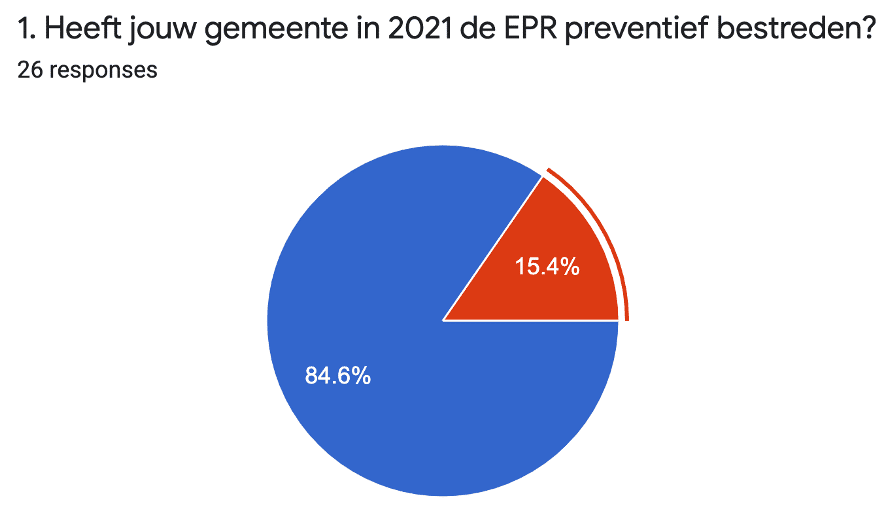First results survey ambassador municipalities
In June and October, we submitted a questionnaire to our ambassadors to examine, among other things, the use of biocides, the curative treatment of the OPC and the use of ecological management methods. You can read the first results here.
As part of our socio-economic study, we work together with 27 ambassador municipalities from the provinces of Antwerp, Limburg (BE + NL), Gelderland and North Brabant. In June and October 2021, we presented them with a questionnaire that examined, among other things, the preventive use of biocides, the curative removal of OPC nests, the application of ecological management methods, sensitization of the population and also the cost of these various methods.
Some figures:
- 85% of the ambassadors use preventive treatment (Bacillus thuringiensis or nematodes) against the OPC, whereas 15% do not use biocides at all
- On average, 21 kg of Bacillus thuringiensis is used per municipality, with a maximum of 51 kg. The annual cost of preventive treatment varies from 0 to 75 000 €.
- The application of biocides differs greatly between the municipalities. While some municipalities spray all infected oaks preventively, others spray only in built-up areas or just not in built-up areas, while others do not use any biocides at all.
- The curative treatment of trees is much more expensive per tree than preventive treatment, but is often cheaper in total if only problematic areas are tackled (e.g. at playgrounds, benches, recreational areas, …).
- Our ambassadors are committed to change the mowing regime of their road verges in order to stimulate biodiversity (mowing less often, phased mowing, sinus mowing, mowing with an more ecological machines). Bird nesting boxes are also used very frequently in oak trees.
- Already 65% of our ambassadors are committed to raising awareness
- In time, all our ambassadors want to further reduce their use of biocides
You can find more figures here.
